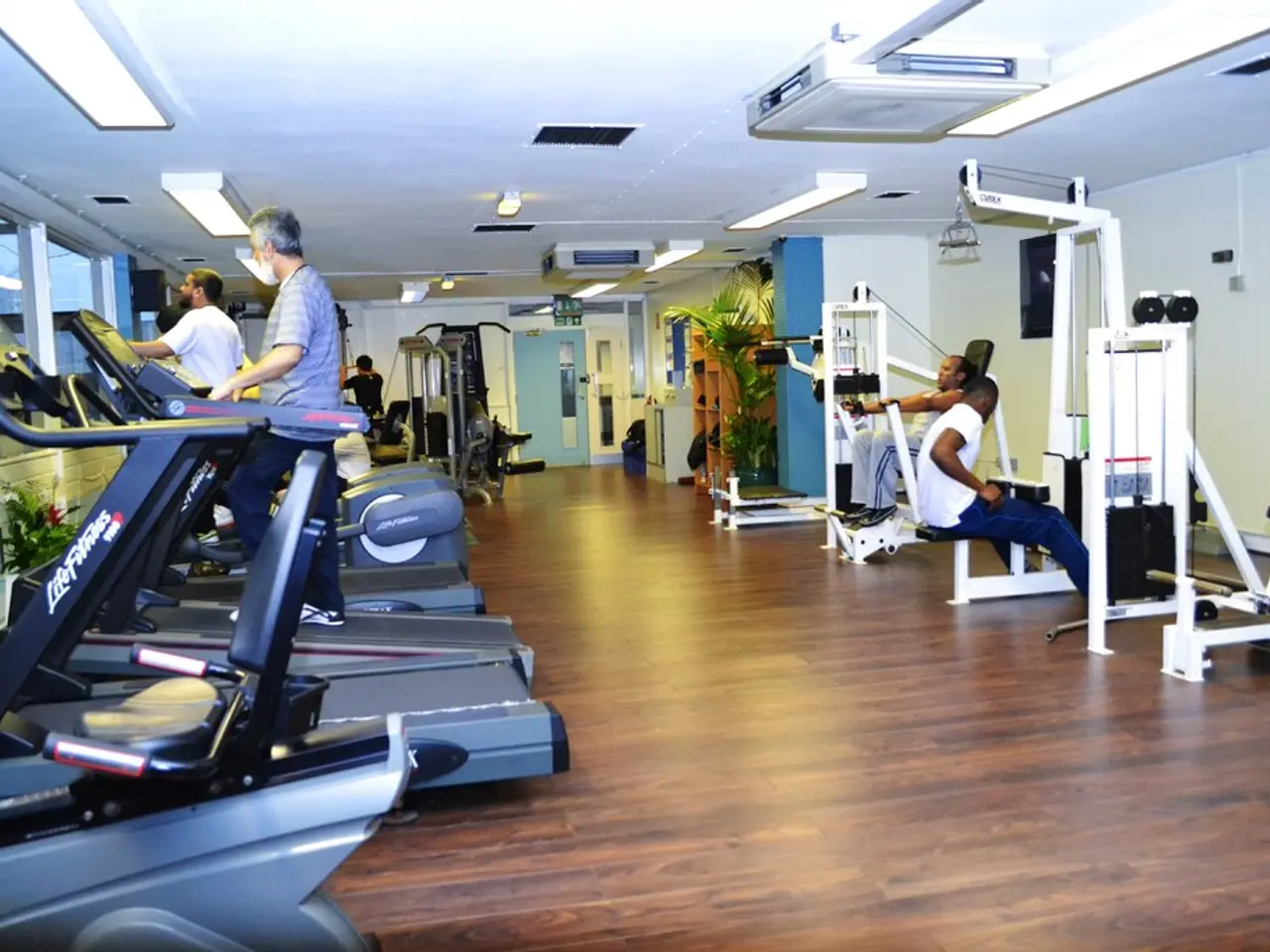Quick exercise routine focused on targeting key muscle groups throughout the body, claims the trainer, and can be completed in just 20 minutes time.
================================================================
A 20-minute home workout using bodyweight exercises offers numerous health benefits, including improved cardiovascular health, muscle strength, endurance, mental well-being, and reduced risk of chronic diseases. This full-body routine targets the arms, core, and legs, making it an efficient workout for busy individuals.
Key Benefits
- Cardiovascular and overall health improvement: Just 20 minutes a day of moderate activity can lower risks of heart disease, depression, dementia, and several cancers.
- Muscle strength and endurance gains: Short daily bodyweight routines improve push-up and sit-up performance significantly within a few weeks.
- Calorie burn and muscle growth: Full-body workouts using compound movements activate more muscle tissue, increasing energy expenditure and promoting muscle hypertrophy.
- Mental health boost: Regular light to moderate exercise improves mental well-being, even with only five minutes daily.
The Exercises
The workout consists of nine exercises, each performed for a specified number of repetitions or time. Here's a breakdown of each exercise:
- Triceps Dip: Sit on the edge of a chair, slide your bum off, bend your elbows to lower yourself, and push through your hands to rise back up.
- Push-up: Start in a high plank position, bend your elbows to lower your body toward the floor, and push through your hands to rise back up.
- Shoulder Tap: Engage the core and tap each shoulder with the opposite hand from a high plank position.
- High Knees: Run in place with high knees for a specified time.
- Mountain Climber: From a high plank position, drive the right knee up to the left elbow and then the left knee to the right elbow, alternating quickly.
- Squat: Stand with feet just wider than hip-width apart, lower by pushing the bum back and bending the knees, and then push through the heels to return to standing.
- Reverse Lunge: Step back with one leg, bend both knees until the back knee hovers just above the floor and the front one forms a rough right angle, push up through the front heel to return to standing.
- Single-Leg Romanian Deadlift: Stand with feet hip-width apart, hinge at the hips to lower the torso to be parallel with the floor while extending the right leg behind, return to standing, and repeat on the other side.
- Dead Bug: Lie on the back with knees bent at a 90° angle and arms extended above the head, slowly lower the left arm and right leg, return to the starting position, and repeat with the opposite arm and leg.
The Routine
It is recommended to rest for 15 to 20 seconds between sets and 30 seconds between exercises. Here's a sample 20-minute bodyweight full-body workout:
- Warm-up (e.g., single-leg glute bridge, superman holds)
- Upper body: push-ups, pike push-ups, dips, side plank rotations
- Lower body: chair squats, pistol squats, jump lunges, reverse plank
- Core and cooldown exercises
Perform each exercise for about 40 seconds followed by 20 seconds rest, completing two circuits for a comprehensive session.
Progression Options
To keep progressing, consider increasing exercise complexity or intensity, increasing work duration or reducing rest, adding more rounds or circuits, incorporating unilateral exercises, or focusing on controlled movement.
References
[1] American Heart Association (2021). Short bouts of exercise may help reduce heart disease risk. [online] Available at: https://www.heart.org/en/news/2021/03/22/short-bouts-of-exercise-may-help-reduce-heart-disease-risk
[2] National Cancer Institute (2021). Physical activity and cancer. [online] Available at: https://www.cancer.gov/about-cancer/causes-prevention/risk/diet/physical-activity/physical-activity-fact-sheet
[3] Schoenfeld, B.J., Grgic, J., Ogborn, D., Krieger, J.W., Delaney, B.C. and Wilborn, C.D. (2017). Differences in strength gains between high-volume vs. low-volume resistance training: A systematic review and meta-analysis. Journal of Strength and Conditioning Research, 31(1), pp.1-10.
[4] Warburton, D.E., Nicol, C.W., Bredin, S.S., Cammi, P., Chen, K.Y., Ekelund, U., Esliger, D.W., Gallagher, P.D., Halson, S.L., Haskell, W.L., Huffman, J.W., Jones, P.H., Judge, J.O., Katzmarzyk, P.T., Kokko, H., Leyland, A.H., Maddison, R., Matthews, C.E., Moore, H.A., Myers, T.D., Owen, N., Sjöström, M., Troup, S.D., Trost, S.G., Vaz, L., Wareham, N.J., Wijndaele, K., Zhang, X. and Brage, S. (2016). Effects of physical activity on mental health: Evidence from the 2016 systematic review and meta-analysis of reviews. British Journal of Sports Medicine, 50(11), pp.685-694.
[5] Zatsiorsky, V.M. (2012). Science and practice of strength training. Human Kinetics.
- Incorporating a 20-minute yoga session before or after your workout can enhance the health-and-wellness benefits of your fitness-and-exercise routine, as yoga promotes flexibility, balance, and mental clarity, further reducing the risk of chronic diseases and improving mental well-being.
- Regularly integrating science-backed practices like yoga, meditation, and foam rolling into your health-and-wellness plan can complement your workout regimen, contributing to overall fitness, better recovery, and long-term health.




